|
|
| |
|
|
| |
|
|
|
|
| |
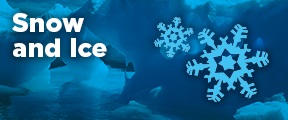 Climate Change Indicators: Snow and
Ice Climate Change Indicators: Snow and
Ice
The Earth’s surface contains many forms of snow and ice,
including sea, lake, and river ice; snow cover; glaciers,
ice caps, and ice sheets; and frozen ground. Climate change
can dramatically alter the Earth’s snow- and ice-covered
areas because snow and ice can easily change between solid
and liquid states in response to relatively minor changes in
temperature. This chapter focuses on trends in snow,
glaciers, and the freezing and thawing of oceans and lakes.
Reduced snowfall and less snow cover on the ground could
diminish the beneficial insulating effects of snow for
vegetation and wildlife, while also affecting water
supplies, transportation, cultural practices, travel, and
recreation for millions of people. For communities in Arctic
regions, reduced sea ice could increase coastal erosion and
exposure to storms, threatening homes and property, while
thawing ground could damage roads and buildings and
accelerate erosion. Conversely, reduced snow and ice could
present commercial opportunities for others, including
ice-free shipping lanes and increased access to natural
resources. |
|
Worldwide Implications
Such changing climate conditions can have worldwide
implications because snow and ice influence air
temperatures, sea level, ocean currents, and storm patterns.
For example, melting ice sheets on Greenland and Antarctica
add fresh water to the ocean, increasing sea level and
possibly changing ocean circulation that is driven by
differences in temperature and salinity. Because of their
light color, snow and ice also reflect more sunlight than
open water or bare ground, so a reduction in snow cover and
ice causes the Earth’s surface to absorb more energy from
the sun and become warmer. |
|
|
Summary of Key Points |
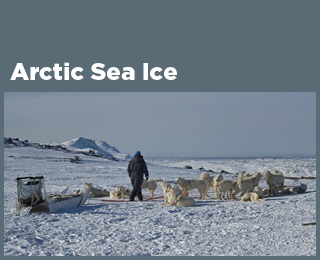 Arctic
Sea Ice - Part of the Arctic Ocean is covered by ice
year-round. The area covered by ice is typically smallest in
September, after the summer melting season. The annual
minimum extent of Arctic sea ice has decreased over time,
and in September 2012 it was the smallest ever recorded. The
length of the melt season for Arctic ice has grown, and the
ice has also become thinner, which makes it more vulnerable
to further melting. Arctic
Sea Ice - Part of the Arctic Ocean is covered by ice
year-round. The area covered by ice is typically smallest in
September, after the summer melting season. The annual
minimum extent of Arctic sea ice has decreased over time,
and in September 2012 it was the smallest ever recorded. The
length of the melt season for Arctic ice has grown, and the
ice has also become thinner, which makes it more vulnerable
to further melting. |
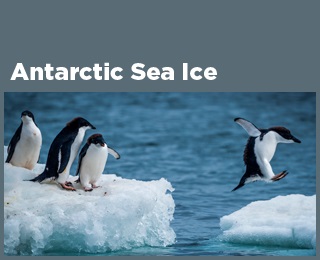 Antarctic
Sea Ice - Antarctic sea ice extent in September and
February has increased somewhat over time. The September
maximum extent reached the highest level on record in
2014—about 7 percent larger than the 1981–2010 average.
Slight increases in Antarctic sea ice are outweighed by the
loss of sea ice in the Arctic during the same time period,
however. Antarctic
Sea Ice - Antarctic sea ice extent in September and
February has increased somewhat over time. The September
maximum extent reached the highest level on record in
2014—about 7 percent larger than the 1981–2010 average.
Slight increases in Antarctic sea ice are outweighed by the
loss of sea ice in the Arctic during the same time period,
however. |
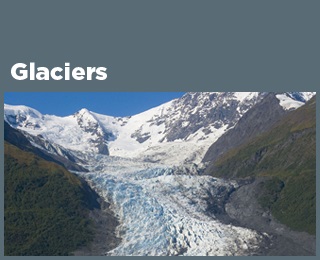 Glaciers
- Glaciers in the United States and around the world have
generally shrunk since the 1960s, and the rate at which
glaciers are melting has accelerated over the last decade.
The loss of ice from glaciers has contributed to the
observed rise in sea level. Glaciers
- Glaciers in the United States and around the world have
generally shrunk since the 1960s, and the rate at which
glaciers are melting has accelerated over the last decade.
The loss of ice from glaciers has contributed to the
observed rise in sea level. |
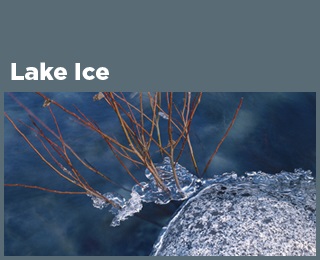 Lake
Ice - Lakes in the northern United States are freezing
later and thawing earlier compared with the 1800s and early
1900s. Freeze dates have shifted later at a rate of roughly
half a day to one-and-a-half days per decade. All of the
lakes studied were also found to be thawing earlier in the
year, with spring thaw dates growing earlier by up to 24
days in the past 110 years. Lake
Ice - Lakes in the northern United States are freezing
later and thawing earlier compared with the 1800s and early
1900s. Freeze dates have shifted later at a rate of roughly
half a day to one-and-a-half days per decade. All of the
lakes studied were also found to be thawing earlier in the
year, with spring thaw dates growing earlier by up to 24
days in the past 110 years. |
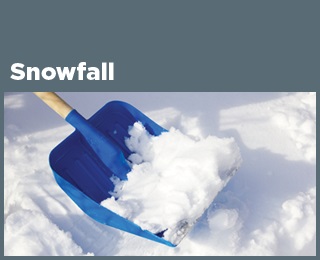 Snowfall
- Total snowfall—the amount of snow that falls in a
particular location—has decreased in most parts of the
country since widespread records began in 1930. One reason
for this decline is that nearly 80 percent of the locations
studied have seen more winter precipitation fall in the form
of rain instead of snow. Snowfall
- Total snowfall—the amount of snow that falls in a
particular location—has decreased in most parts of the
country since widespread records began in 1930. One reason
for this decline is that nearly 80 percent of the locations
studied have seen more winter precipitation fall in the form
of rain instead of snow. |
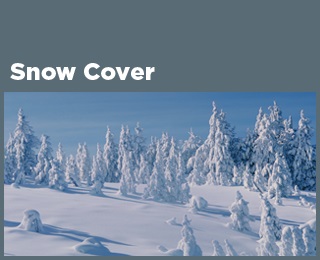 Snow
Cover - Snow cover refers to the area of land that is
covered by snow at any given time. Between 1972 and 2015,
the average portion of North America covered by snow
decreased at a rate of about 3,300 square miles per year,
based on weekly measurements taken throughout the year.
There has been much year-to-year variability, however. The
length of time when snow covers the ground has become
shorter by nearly two weeks since 1972, on average. Snow
Cover - Snow cover refers to the area of land that is
covered by snow at any given time. Between 1972 and 2015,
the average portion of North America covered by snow
decreased at a rate of about 3,300 square miles per year,
based on weekly measurements taken throughout the year.
There has been much year-to-year variability, however. The
length of time when snow covers the ground has become
shorter by nearly two weeks since 1972, on average. |
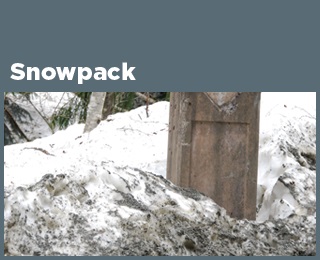 Snowpack
- The depth of snow on the ground (snowpack) in early spring
decreased at more than 90 percent of measurement sites in
the western United States between 1955 and 2016. Across all
sites, snowpack depth declined by an average of 23 percent
during this time period. Snowpack
- The depth of snow on the ground (snowpack) in early spring
decreased at more than 90 percent of measurement sites in
the western United States between 1955 and 2016. Across all
sites, snowpack depth declined by an average of 23 percent
during this time period. |
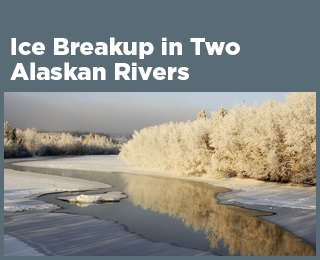 Community
Connection: Ice Breakup in Two Alaskan Rivers - Regions
in the far north are warming more quickly than other parts
of the world. Two long-running contests on the Tanana and
Yukon rivers in Alaska—where people guess the date when the
river ice will break up in the spring—provide a century’s
worth of evidence revealing that the ice on these rivers is
generally breaking up earlier in the spring than it once
did. Community
Connection: Ice Breakup in Two Alaskan Rivers - Regions
in the far north are warming more quickly than other parts
of the world. Two long-running contests on the Tanana and
Yukon rivers in Alaska—where people guess the date when the
river ice will break up in the spring—provide a century’s
worth of evidence revealing that the ice on these rivers is
generally breaking up earlier in the spring than it once
did. |
|
|
|
|
EPA Page |
|
This is the
EPA page for this topic. To see if the Trump
administration has changed the EPA page, simply click the
link and compare the information with this page. If you
notice changes were made to the EPA page, please post a
comment. Thanks. |
|
|
|
|
|
|
|
|
|
|
|
|
Additional Climate Change Information |
Climate Change and Carbon Dioxide
(Beginner - Listening,
reading)
A video lesson to
help with your understanding of climate change
and carbon dioxide.
The English is
spoken at 75% of normal speed.
Great English listening and reading practice. |
Carbon Dioxide and Climate Change
(Beginner - Listening,
reading)
A video lesson to
help with your understanding of carbon dioxide
and climate change.
The English is
spoken at 75% of normal speed.
Great English listening and reading practice. |
Environmental Group Warns Earth's Health at Risk
(Beginner - Listening,
reading)
A video lesson to
help with your understanding of climate change.
The English is
spoken at 75% of normal speed.
Great English listening and reading practice.
A report by the World Wildlife Fund looked at thousands of animal populations
and found they have dropped significantly in 40 years. |
Sea Levels Rising at Fastest Rate in 3,000 years
(Beginner - Listening,
reading)
A video lesson to
help with your understanding of climate change.
The English is
spoken at 75% of normal speed.
Great English listening and reading practice.
A group of scientists say sea levels are rising at record rates. Another group
found that January temperatures in the Arctic reached a record high. |
Capturing CO2 Gas Is Not Easy
(Beginner - Listening,
reading)
A video lesson to
help with your understanding of climate change.
The English is
spoken at 75% of normal speed.
Great English listening and reading practice.
Most scientists agree that carbon-dioxide gas is partly to blame for climate
change: rising global temperatures. But capturing the CO2 gas released by power
stations is costly and difficult. |
Growth, Climate Change Threaten African Plants and
Animals
(Beginner - Listening,
reading)
A video lesson to
help with your understanding of climate change.
The English is
spoken at 75% of normal speed.
Great English listening and reading practice.
Researchers believe Africa may lose as much as 30 percent of its animal and
plant species by the end of this century. |
|
|
|
|
Search Fun Easy English |
|
|
|
|
|
|
|
|
|
|
|
|
|
|
|
About
Contact
Copyright
Resources
Site Map |